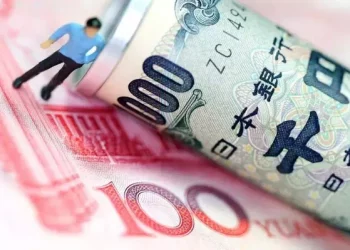On Wednesday, the Indian Rupee (INR) traded flat despite a modest recovery of the US Dollar. Economic indicators showed a rise in business activity in India for July, with both the manufacturing and services sectors improving. The advanced reading of India’s HSBC Manufacturing PMI climbed to 58.5 in July from 58.3 in June, while the Services PMI increased to 61.1 from 60.5. Despite these positive reports, the INR failed to gain ground against the US Dollar.
The INR’s potential for upside remains constrained following an announcement by India’s Finance Minister, Nirmala Sitharaman, at the Budget Session of Parliament. She proposed raising the capital gains tax on equity investments and equity derivative trades. However, the Reserve Bank of India (RBI) may intervene to prevent the INR from depreciating further, and a drop in crude oil prices could also mitigate the currency‘s losses.
Market participants are now focused on the preliminary US S&P Global Purchasing Managers Index (PMI) for July, due later on Wednesday. Expectations are for the Manufacturing PMI to slightly improve to 51.7 from 51.6 in June, while the Services PMI is forecast to decrease to 54.4 from 55.3.
Daily Digest Market Movers: Indian Rupee Faces Multiple Challenges
Pranjul Bhandari, chief India economist at HSBC, noted, “The Flash Composite Output Index signaled continued robust growth in India’s private sector.” Despite this, India’s benchmark equity indexes, the BSE Sensex and Nifty 50, saw significant losses on Tuesday, ending the day slightly lower after falling more than 1% earlier.
Finance Minister Sitharaman announced at the Budget Session that the securities transaction tax on futures and options will be raised to 0.02% and 0.01%, respectively. She also stated that long-term capital gains on all financial and non-financial assets will be taxed at 12.5%, with the exemption limit for capital gains set at Rs 1.25 lakh.
In other tax policy changes, customs duty on gold and silver will be reduced to 6%, and on platinum to 6.4%. The government also plans to promote the Indian Rupee for overseas investments by simplifying the rules and regulations for Electronic Data Interchange (EDI).
According to Reuters, India’s budget aims to balance higher spending on job creation and rural development with a reduced fiscal deficit target. The fiscal deficit goal has been lowered to 4.9% of GDP from 5.1% in the February interim budget.
US Economic Indicators and Market Sentiment
In the US, existing home sales dropped by 5.4% month-on-month in June, from 4.11 million to 3.89 million, falling short of expectations. The Richmond Fed Manufacturing Index also declined to -17 in July from -10 in the previous month. Traders are now pricing in nearly a 96% chance of a Federal Reserve rate cut in September, according to the CME FedWatch Tool.
Technical Analysis: Indian Rupee’s Long-Term Outlook
The Indian Rupee remains steady for the day. The USD/INR pair maintains a constructive stance, confirming a breakout above the month-long trading range and holding above the key 100-day Exponential Moving Average (EMA). The upward momentum is supported by the 14-day Relative Strength Index (RSI), which remains in the bullish zone around 60.00.
The immediate resistance level for the USD/INR pair is the all-time high of 83.77. A bullish breakout above this level could see a rally to the psychological level of 84.00. Conversely, any follow-through selling below the resistance-turned-support level at 83.65 might pave the way to 83.51, the low of July 12. An additional downside target to watch is 83.41, the 100-day EMA.
Related Topics:
























